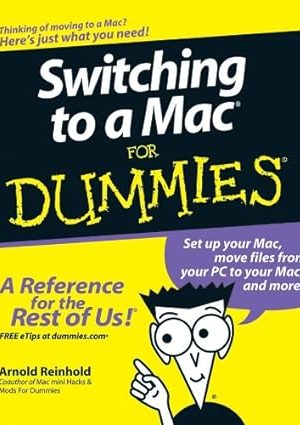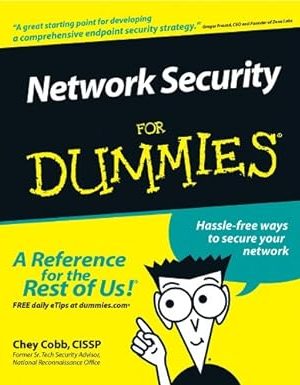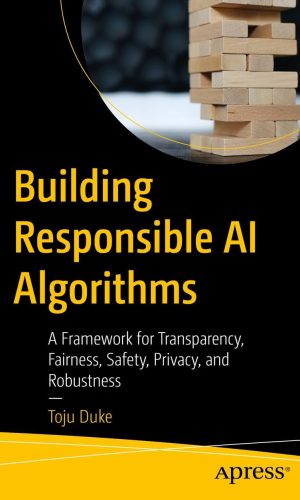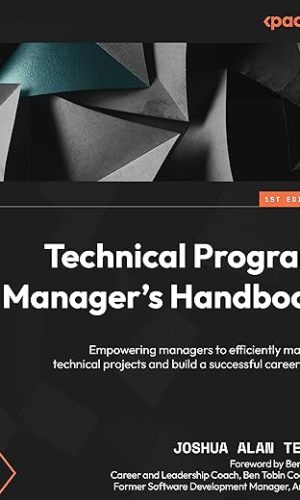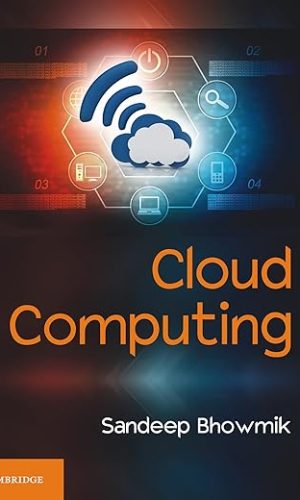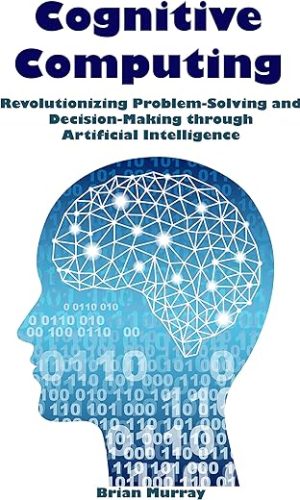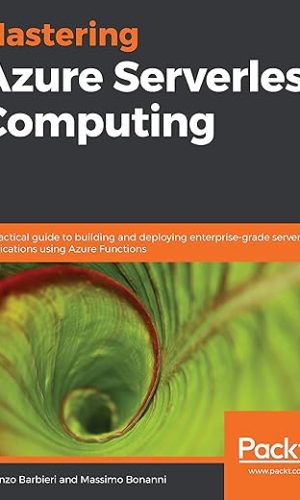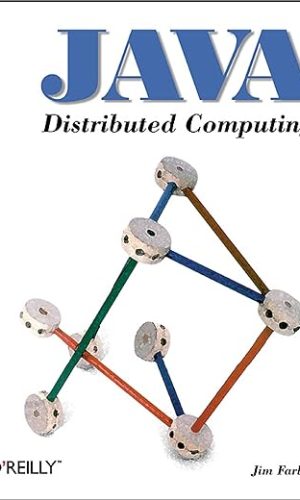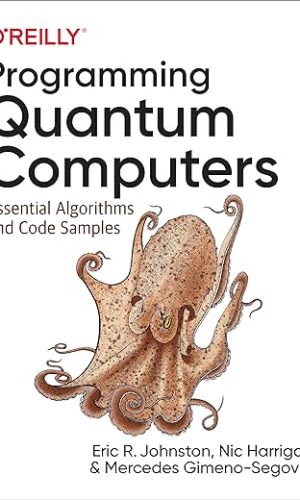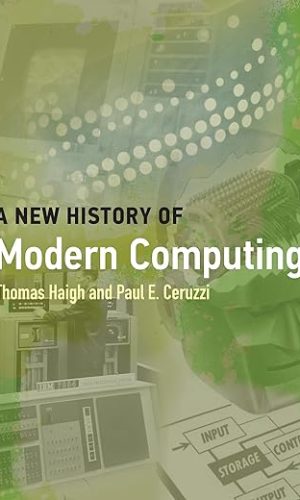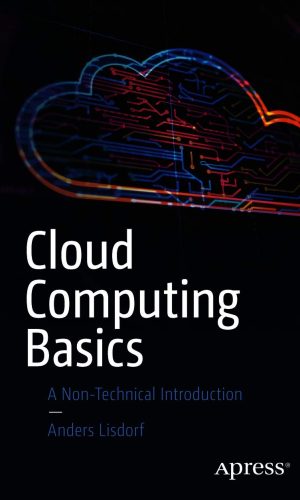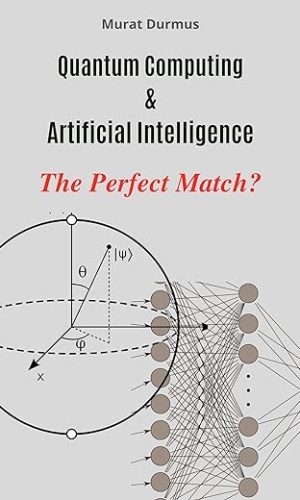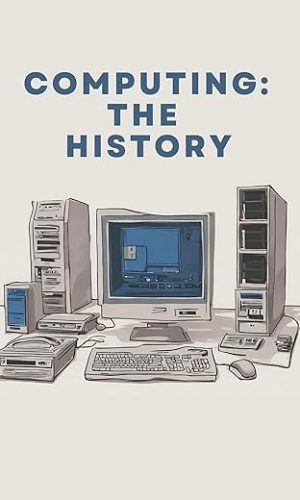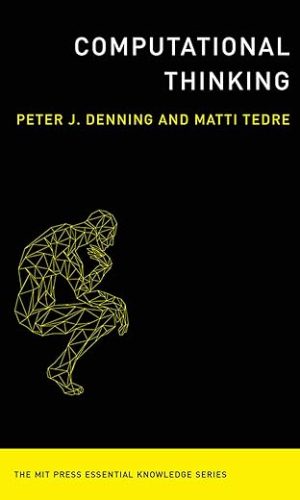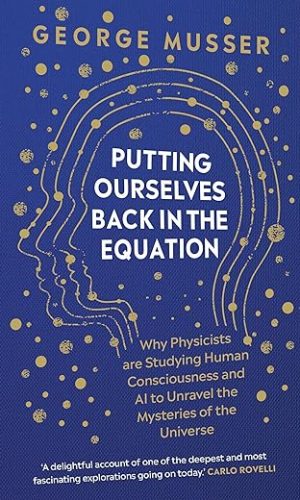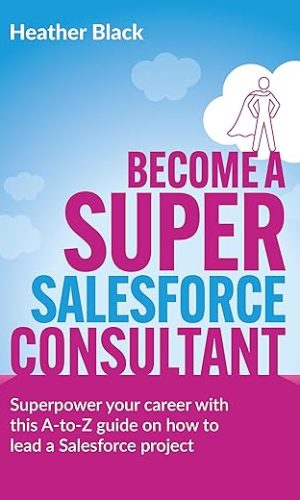Computing
-
Switching to a Mac For Dummies
Thinking of making the switch from your PC to a Mac? Congratulations! You’re in for a great, virus-free ride. And Switching to Mac For Dummies makes it smoother than you ever imagined. From buying the Mac that’s right for you to transferring your files to breaking your old Windows habits and learning to do things the (much easier) Mac way, it makes the whole process practically effortless.Whether you’ve been using Windows XP, Vista, or even Linux, you’ll find simple, straightforward ways to make your transition go smoothly. That will leave you plenty of time to get familiar with Mac’s prodigious and dynamic OS X capabilities. You’ll also connect with iLife, Mac’s amazing integrated software suite that lets you turn your computer into a powerful media center—not just for listening and watching, but for creating music, video, and much more. Discover how to:
- Decide whether the switch to Mac is right for you
- Choose the Mac that will change your life
- Keep and reuse elements of your old setup
- Go online with your Mac
- Connect to your home network—even that old PC
- Go media crazy with iTunes, iPhoto and more
- Take advantage of Mac’s business capabilities
Complete with handy cheat sheet of common Mac short cuts and commands as well as a glossary of Mac world lingo, Switching to Mac For Dummies ensures that your switch will be the smartest thing you ever do.
Read more
£11.40 -
Network Security For Dummies
A hands-on, do-it-yourself guide to securing and auditing a networkCNN is reporting that a vicious new virus is wreaking havoc on the world’s computer networks. Somebody’s hacked one of your favorite Web sites and stolen thousands of credit card numbers. The FBI just released a new report on computer crime that’s got you shaking in your boots. The experts will tell you that keeping your network safe from the cyber-wolves howling after your assets is complicated, expensive, and best left to them. But the truth is, anybody with a working knowledge of networks and computers can do just about everything necessary to defend their network against most security threats.
Network Security For Dummies arms you with quick, easy, low-cost solutions to all your network security concerns. Whether your network consists of one computer with a high-speed Internet connection or hundreds of workstations distributed across dozens of locations, you’ll find what you need to confidently:
- Identify your network’s security weaknesses
- Install an intrusion detection system
- Use simple, economical techniques to secure your data
- Defend against viruses
- Keep hackers at bay
- Plug security holes in individual applications
- Build a secure network from scratch
Leading national expert Chey Cobb fills you in on the basics of data security, and he explains more complex options you can use to keep your network safe as your grow your business. Among other things, you’ll explore:
- Developing risk assessments and security plans
- Choosing controls without breaking the bank
- Anti-virus software, firewalls, intrusion detection systems and access controls
- Addressing Unix, Windows and Mac security issues
- Patching holes in email, databases, Windows Media Player, NetMeeting, AOL Instant Messenger, and other individual applications
- Securing a wireless network
- E-Commerce security
- Incident response and disaster recovery
Whether you run a storefront tax preparing business or you’re the network administrator at a multinational accounting giant, your computer assets are your business. Let Network Security For Dummies provide you with proven strategies and techniques for keeping your precious assets safe.
Read more
£18.80Network Security For Dummies
£18.80 -
Sea of Rust: The post-apocalyptic science fiction epic about AI and what makes us human
*One of Financial Times’ Best Books of 2017*
“SEA OF RUST is a 40-megaton cruise missile of a novel – it’ll blow you away and lay waste to your heart . . . visceral, relentless, breathtaking” Joe Hill, Sunday Times bestselling author
An action-packed post-apocalyptic thriller from the critically acclaimed author, screenwriter, and noted film critic.
Humankind is extinct. Wiped out in a global uprising by the very machines made to serve them. Now the world is controlled by One World Intelligences – vast mainframes that have assimilated the minds of millions of robots.
But not all robots are willing to cede their individuality, and Brittle – a loner and scavenger, focused solely on survival – is one of the holdouts.
Only, individuality comes at a price, and after a near-deadly encounter with another AI, Brittle is forced to seek sanctuary. Not easy when an OWI has decided to lay siege to the nearest safe city.
Critically damaged, Brittle has to hold it together long enough to find the essential rare parts to make repairs – but as a robot’s CPU gradually deteriorates, all their old memories resurface. For Brittle, that means one haunting memory in particular . . .
Sea of Rust boldly imagines a future in which no hope should remain, and yet a humanlike AI strives to find purpose among the ruins.
Read what everyone is saying about Sea of Rust:
‘What we’ve got here, however, is a writer who isn’t afraid to ask the hard questions. What is reality? Memory? Purpose? I found myself totally engrossed in the tale’ Goodreads reviewer, ⭐ ⭐ ⭐ ⭐ ⭐
‘Forget the Martian, Ready Player One, or Annihilation; Sea of Rust deserves to be next to Station Eleven and Dark Matter as one of the most brilliant science fiction books of the 2010’s decade’ Goodreads reviewer, ⭐ ⭐ ⭐ ⭐ ⭐
‘Both epic and fast-paced, this book grabbed me from the get go and wouldn’t let me put it down until the end’ Goodreads reviewer, ⭐ ⭐ ⭐ ⭐ ⭐
‘It’s very rare for me to gush about a book but this one is just made of awesome. I’m all about Post Apocalyptic fiction and I can’t get enough of it’ Goodreads reviewer, ⭐ ⭐ ⭐ ⭐ ⭐
‘A really great work of SF in an era where a lot of the best stuff is speculation about AI and how we are going to deal with it. This definitely stands among the best’ Goodreads reviewer, ⭐ ⭐ ⭐ ⭐ ⭐
‘I was glued to the story. I felt like it was The Road Warrior narrated by the robotic reincarnation of Travis McGee, with some Inception-level mind-games thrown in’ Goodreads reviewer, ⭐ ⭐ ⭐ ⭐ ⭐
‘I loved the wild west aspects of the setting, I loved the dystopia of human extinction, I loved the epic battles scenes’ Goodreads reviewer, ⭐ ⭐ ⭐ ⭐ ⭐
Read more
£4.70 -
Building Responsible AI Algorithms: A Framework for Transparency, Fairness, Safety, Privacy, and Robustness
This book introduces a Responsible AI framework and guides you through processes to apply at each stage of the machine learning (ML) life cycle, from problem definition to deployment, to reduce and mitigate the risks and harms found in artificial intelligence (AI) technologies. AI offers the ability to solve many problems today if implemented correctly and responsibly. This book helps you avoid negative impacts – that in some cases have caused loss of life – and develop models that are fair, transparent, safe, secure, and robust.
The approach in this book raises your awareness of the missteps that can lead to negative outcomes in AI technologies and provides a Responsible AI framework to deliver responsible and ethical results in ML. It begins with an examination of the foundational elements of responsibility, principles, and data. Next comes guidance on implementation addressing issues such as fairness, transparency, safety, privacy, and robustness. The book helps you think responsibly while building AI and ML models and guides you through practical steps aimed at delivering responsible ML models, datasets, and products for your end users and customers.What You Will Learn
- Build AI/ML models using Responsible AI frameworks and processes
- Document information on your datasets and improve data quality
- Measure fairness metrics in ML models
- Identify harms and risks per task and run safety evaluations on ML models
- Create transparent AI/ML models
- Develop Responsible AI principles and organizational guidelines
Who This Book Is For
AI and ML practitioners looking for guidance on building models that are fair, transparent, and ethical; those seeking awareness of the missteps that can lead to unintentional bias and harm from their AI algorithms; policy makers planning to craft laws, policies, and regulations that promote fairness and equity in automated algorithmsRead more
£20.90 -
Technical Due Diligence: The Handbook For CTO, Startups, Consultant, Business Owner, Private Equity And Venture Capital Firms Who Acquire Other Software Companies
If you have ever thought to yourself, “I want to know how to do the Technical Due Diligence” then this is perfect book for you. In it, the author comes up with some important themes: Due-diligence To VC And PE Firms, In Depth Technical Due Diligence In Software Development and so on.In the book, the author comes up with some important themes:
- Need Of Technical Due Diligence
- Types Of Due-diligence
- Analyst Role In Technology Due Diligence
- Due-diligence Before Investment
- Due-diligence To VC And PE Firms For Investment Purposes
- Technical Due Diligence In Agile Era
- TDD In Project Development/Design/Bid Process
- Technical Due Diligence For Software Applications
- Technical Due Diligence For Technology Algorithms
- Technical Due Diligence For Technology Algorithms Legal Issues
- In Depth Technical Due Diligence In Software Development
- TDD In Strength And Weakness Of The Software Product/Service
- Technical Due Diligence Checklist For Software Applications
- Follow Along The Journey
- Self Q&A
This book is very useful in your business as well as professional life as this book covers Technical Due Diligence For Software Applications and book is key guide for Consultants, chief technical officer (CTO), Business owners, Private Equity (PE) and Venture Capital (VC) Firms who acquire other companies or make investment in software products or companies.
Technical Due Diligence help to save money and avoid risk of investing in wrong decisions.This book will help you to make investment decision in right direction.
This is one of the very important subject, which every software professional must understand how to do the technical due diligence for technology products and material, which is important for all business sectors.
Review 1: This book is useful for any one for their companies and for the business world, I would recommend to everyone .
Review 2: If you are involved in this field of profession, then this book is best guide for you. This book will help you to gain knowledge that how much due diligence will be required while you are investing in a deal or a company which involves any technology. I found this book very helpful and it also provides some sample documents and methodology as well.
Review 3: The book is very useful for the readers, as the book covers many important topics regarding the technical due diligence. These topics are discussed in detail along with a lot of practical examples. The section on the sample documents and methodology will be very helpful to understand how to perform technical due diligence for software applications.
Read more
£3.50 -
Modern Technical Writing: An Introduction to Software Documentation
This slender volume provides the foundational knowledge to start creating and publishing great software documentation. Written by the lead technical writer at one of Silicon Valley’s most exciting companies, Modern Technical Writing is a set of guiding principles and thoughtful recommendations for new and experienced technical writers alike. Not a reference manual, and not comprehensive, it instead serves as an introduction to a sensible writing and publishing process, one that has eluded the profession for too long.Read more
£3.00 -
Technical Program Manager’s Handbook: Empowering managers to efficiently manage technical projects and build a successful career path
Explore the different aspects of the technical program manager’s role in the tech world and get ready to advance your career across the Big Five tech companies
Key Features
- Uncover the secret to becoming a successful technical program manager
- Learn some of the system design principles and architectural concepts necessary for a TPM
- Get up and running with a wide range of foundational program management topics
Book Description
The technical program manager (TPM) is a relatively new role born out of the need of the tech industry to have a specialized practitioner who speaks both tech and business and leverages this bilingual talent to get results that no one else can.
This book dives into what makes a TPM tick. You’ll find out which project and program management skills will help you shine and how you can apply your technical skills for effective results. This book looks at the TPM role across the Big Five tech companies (Amazon, Google, Microsoft, Apple, and Meta) to help you discern the most effective skills to be successful no matter which company you work for.
Are you already a well-performing TPM looking to see what’s next? This book identifies the career paths for a TPM at the Big Five to help you decide the next step for you.
By the end of this book, you’ll have a clear understanding of how to be a TPM, along with a breakdown of the necessary technical and program management skills to develop a clear roadmap for your career.
What you will learn
- Investigate why a TPM is an important role in the tech industry
- Understand the purpose and uniqueness of the TPM role
- Discover what makes a successful TPM
- Navigate project management with your unique technical skills
- Explorer the career opportunities available for a TPM
- Compare the TPM role and responsibilities across the Big Five tech leaders
Who this book is for
This TPM book is for aspiring and established technical program managers in the tech industry. To get the most out of this book, you should have a basic understanding of the project management life cycle and be comfortable with technical concepts as we dive into basic system design and architecture landscapes in context to the TPM role and expectations.
Table of Contents
- Fundamentals of a Technical Program Manager
- Pillars of a Technical Program Manager
- Introduction to Program Management
- Driving Towards Clarity
- Plan Management
- Risk Management
- Stakeholder Management
- Managing a Program
- Career Paths
- Introduction to the Technical Toolset
- Code Development and System Design Expectations
- System Design and Architecture Landscape
- Enhancing Management Using Your Technical Toolset
Read more
£16.70 -
Cloud Computing
Written in a tutorial style, this comprehensive guide follows a structured approach explaining cloud techniques, models and platforms. Popular cloud services such as Amazon, Google and Microsoft Azure are explained in the text. The security risks and challenges of cloud computing are discussed in detail with useful examples. Emerging trends including mobile cloud computing and internet of things are discussed in the book for the benefit of the readers. Numerous review questions, multiple choice exercises and case studies facilitate enhanced understanding. This textbook is ideal for undergraduate and graduate students of computer science engineering, and information technology.Read more
£36.70Cloud Computing
£36.70 -
Cognitive Computing: Revolutionizing Problem-Solving and Decision-Making through Artificial Intelligence
Cognitive Computing: Revolutionizing Problem-Solving and Decision-Making through Artificial Intelligence is a cutting-edge exploration of the latest developments in AI and how they are transforming the way we solve problems and make decisions.
Throughout the book, the author uses clear and concise language to explain complex concepts and theories, making this an ideal resource for students, researchers, and professionals in a wide range of fields, from finance and healthcare to education and government.
Topics covered include:- The basics of cognitive computing, including neural networks, deep learning, and reinforcement learning
- The different approaches to implementing cognitive computing, including expert systems, chatbots, and autonomous vehicles
- The most important applications of cognitive computing in various fields, including healthcare, finance, education, and government
- The ethical and societal implications of cognitive computing, including issues around privacy, bias, and job displacement
- The future of cognitive computing and its potential impact on society and the economy.
Whether you’re a student, a researcher, or a professional looking to stay up-to-date with the latest developments in AI, Cognitive Computing: Revolutionizing Problem-Solving and Decision-Making through Artificial Intelligence is the ultimate guide to the transformative potential of cognitive computing for the modern world.
Read more
£2.80 -
Mastering Azure Serverless Computing: A practical guide to building and deploying enterprise-grade serverless applications using Azure Functions
Become an expert in implementing Azure Functions to work seamlessly with your serverless applications
Key Features
- Develop scalable, robust multi-tier apps without worrying about infrastructure needs
- Deploy and manage cost-effective and highly available serverless apps using Azure Functions
- Accelerate enterprise-level application development by seamlessly integrating different cloud services with Azure Functions
Book Description
Application development has evolved from traditional monolithic app development to using serverless options and microservices. This book is designed to guide you through using Microsoft’s Azure Functions to process data, integrate systems, and build simple APIs and microservices.
You will discover how to apply serverless computing to speed up deployment and reduce downtime. You’ll also explore Azure Functions, including its core functionalities and essential tools, along with understanding how to debug and even customize Azure Functions. In addition to this, the book will take you through how you can effectively implement DevOps and automation in your working environment. Toward the concluding chapters, you’ll cover some quick tips, troubleshooting techniques, and real-world serverless use cases that will help you make the most of serverless computing.
By the end of this book, you will have gained the skills you need to develop and deliver cost-effective Azure serverless solutions.
What you will learn
- Create and deploy advanced Azure Functions
- Learn to extend the runtime of Azure Functions
- Orchestrate your logic through code or a visual workflow
- Add caching, security, routing, and filtering to your APIs
- Use serverless technologies in real-world scenarios
- Understand how to apply DevOps and automation to your working environment
Who this book is for
This book is designed for cloud administrators, architects, and developers interested in building scalable systems and deploying serverless applications with Azure Functions. Prior knowledge of core Microsoft Azure services and Azure Functions is necessary to understand the topics covered in this book.
Table of Contents
- Developing and Running Azure Functions
- Customizing Your Azure Functions
- Programming Languages Supported in Azure Functions
- Deploying and Configuring Your Azure Functions
- Leverage the Power of DevOps with Azure Functions
- Testing and Monitoring
- Serverless and Containers
- Orchestration as Code – Durable Functions
- Orchestration as Design – Logic Apps
- Empowering Your Serverless API with API Management
- High-Scale Serverless Event Processing with Event Grid
- Best Practices and Use Cases for Azure Serverless Computing
Read more
£24.70 -
Java Distributed Computing (Java Series)
Distributed computing and Java go together naturally. As the first language designed from the bottom up with networking in mind, Java makes it very easy for computers to cooperate. Even the simplest applet running in a browser is a distributed application, if you think about it. The client running the browser downloads and executes code that is delivered by some other system. But even this simple applet wouldn’t be possible without Java’s guarantees of portability and security: the applet can run on any platform, and can’t sabotage its host.Of course, when we think of distributed computing, we usually think of applications more complex than a client and server communicating with the same protocol. We usually think in terms of programs that make remote procedure calls, access remote databases, and collaborate with others to produce a single result. Java Distributed Computing discusses how to design and write such applications. It covers Java’s RMI (Remote Method Invocation) facility and CORBA, but it doesn’t stop there; it tells you how to design your own protocols to build message passing systems and discusses how to use Java’s security facilities, how to write multithreaded servers, and more. It pays special attention to distributed data systems, collaboration, and applications that have high bandwidth requirements.In the future, distributed computing can only become more important.Java Distributed Computing provides a broad introduction to the problems you’ll face and the solutions you’ll find as you write distributed computing applications.Topics covered in Java Distributed Computing:
- Introduction to Distributed Computing
- Networking Basics
- Distributed Objects (Overview of CORBA and RMI)
- Threads
- Security
- Message Passing Systems
- Distributed Data Systems (Databases)
- Bandwidth Limited Applications
- Collaborative Systems
Read more
£22.50 -
Programming Quantum Computers: Essential Algorithms and Code Samples
Quantum computers are poised to kick-start a new computing revolution—and you can join in right away. If you’re in software engineering, computer graphics, data science, or just an intrigued computerphile, this book provides a hands-on programmer’s guide to understanding quantum computing. Rather than labor through math and theory, you’ll work directly with examples that demonstrate this technology’s unique capabilities.
Quantum computing specialists Eric Johnston, Nic Harrigan, and Mercedes Gimeno-Segovia show you how to build the skills, tools, and intuition required to write quantum programs at the center of applications. You’ll understand what quantum computers can do and learn how to identify the types of problems they can solve.
This book includes three multichapter sections:
- Programming for a QPU—Explore core concepts for programming quantum processing units, including how to describe and manipulate qubits and how to perform quantum teleportation.
- QPU Primitives—Learn algorithmic primitives and techniques, including amplitude amplification, the Quantum Fourier Transform, and phase estimation.
- QPU Applications—Investigate how QPU primitives are used to build existing applications, including quantum search techniques and Shor’s factoring algorithm.
Read more
£33.20 -
A New History of Modern Computing (History of Computing)
How the computer became universal.Over the past fifty years, the computer has been transformed from a hulking scientific supertool and data processing workhorse, remote from the experiences of ordinary people, to a diverse family of devices that billions rely on to play games, shop, stream music and movies, communicate, and count their steps. In A New History of Modern Computing, Thomas Haigh and Paul Ceruzzi trace these changes. A comprehensive reimagining of Ceruzzi’s A History of Modern Computing, this new volume uses each chapter to recount one such transformation, describing how a particular community of users and producers remade the computer into something new.
Haigh and Ceruzzi ground their accounts of these computing revolutions in the longer and deeper history of computing technology. They begin with the story of the 1945 ENIAC computer, which introduced the vocabulary of “programs” and “programming,” and proceed through email, pocket calculators, personal computers, the World Wide Web, videogames, smart phones, and our current world of computers everywhere–in phones, cars, appliances, watches, and more. Finally, they consider the Tesla Model S as an object that simultaneously embodies many strands of computing.
Read more
£21.80 -
Cloud Computing Basics: A Non-Technical Introduction
Regardless of where your organization is in your cloud journey, moving to the cloud is an inevitability in the coming years. The cloud is here to stay, and now is the best time to identify optimal strategies to harness the benefits and mitigate the risks. Cloud Computing Basics is the practical, accessible entry point you have been seeking.
Get an introduction to the basics of cloud computing and all five major cloud platforms. Author Anders Lisdorf ensures that you gain a fundamental cloud vocabulary and learn how to translate industry terms used by different vendors. Leveraging the economic and security benefits that the cloud provides can look very different for each organization, and Lisdorf uses his expertise to help you adapt your strategy accordingly.
Cloud Computing Basics is here to bring your organization into the future. Whether you are a beginner on the topic or a tech leader kick-starting change within your company, this book provides essential insights for cloud adoption and its benefits for our modern digital era. Do not get left behind, and add Cloud Computing Basics to your tech bookshelf today.What You Will Learn
- Understand what the cloud is and how it differs from traditional on-premise solutions
- Gain a fundamental cloud vocabulary and learn how to translate between it and the terms used by different vendors
- Know the main components of the cloud and how they are used
- Be aware of the vendors in the cloud market, their strengths and weaknesses, and what to expect from them
- Tailor the optimal cloud solution to the organizational context
- Study different approaches to cloud adoption and the contexts in which they are suitable so you can determine how your organization will get the most benefit from the cloud
Who This Book Is For
A general business audience that wants to catch up on the basics of cloud computing in order to have informed conversations with technical professionals and vendors. The book is for anyone interested in a deeper understanding of what the cloud is, where it came from, and how it will impact every organization in the future. A basic understanding of information technology helps, but is not required.
Read more
£19.00 -
Quantum Computing & Artificial Intelligence – The Perfect Match? : A Brief Overview for Beginners (Arificial Intelligence Book 8)
Get prepared for the Future!A short read on how quantum computing can boost artificial intelligence.
About the Author
Murat Durmus is CEO and founder of AISOMA (a Frankfurt am Main (Germany) based company specializing in AI-based technology development and consulting) and Author of the books “Mindful AI – Reflections on Artificial Intelligence” and “A Primer to the 42 Most commonly used Machine Learning Algorithms (With Code Samples).”Contents:
- PREFACE
- Do we need Quantum support in Artificial Intelligence (AI)?
- What is AI?
- What is Quantum-Assisted AI?
- Applications and Challenges
- What can Quantum-Assisted AI be used for?
- Quantum Assisted Optimization
- Quantum-assisted AI for material analysis.
- Smart Cities and Transportation
- Current Problems and Challenges
- Explainability and Certification for Quantum AI
- Uncertainty of the Calculation units
- MAIN CHALLENGES THROUGH QUANTUM COMPUTING
- Access to Information
- Standards
- Use of the Knowledge gained from Quantum Computers
- THE POTENTIAL IMPACT OF QUANTUM COMPUTING ON CRITICAL SECTORS
- Information and Communications Technology
- Chemical Engineering
- Pharmaceuticals
- Quantitative Finance
- Aerospace
- Automotive Industry
- Climate change modeling
- Advanced materials
- The Quantum Future
- DEFINITIONS OF TERMS IN QUANTUM SCIENCE
- MILESTONES IN QUANTUM COMPUTING
- The 2020s
- 2021
- 2022
Read more
£1.60 -
The science of AI
“The science of AI: Exploring the Depths of Artificial Intelligence”
Delve into the intricacies of Artificial Intelligence (AI) and Deep Learning through this comprehensive journey that illuminates the core facets shaping our technological landscape. From its historical genesis to futuristic horizons, this book is a compelling guide that navigates the vast terrain of AI with unparalleled depth and insight.
Unveiling the Evolution:
Embark on a historical odyssey through the milestones and evolutionary arcs in AI development. Trace the fascinating journey from its nascent stages to groundbreaking milestones, uncovering the pivotal moments that have sculpted the realm of intelligent machines.
Foundations of AI Unraveled:
Explore the fundamental pillars of AI and Deep Learning in Chapter 1, diving into machine learning essentials, neural networks, and their transformative applications. This section serves as a gateway, unraveling the mysteries behind AI’s incredible capabilities in diverse domains.
Underlying Principles and Advanced Techniques:
Chapter 2 delves into the intricate mathematical foundations underpinning AI, from linear algebra to optimization algorithms. Experience an in-depth exploration of neural network architectures, advanced techniques like GANs and reinforcement learning, illuminating the mechanisms behind AI’s cognitive prowess.
Real-world Applications and Ethical Contours:
Discover the real-world impact of AI in Chapter 3, where diverse applications in healthcare, finance, robotics, and cybersecurity are vividly portrayed. Simultaneously, confront the ethical considerations in Chapter 4, addressing biases, fairness, and governance in AI development.
Human vs. Machine:
Chapter 5 sparks the discourse on comparative intelligence, contrasting human thought processes with machine movements. Uncover the hybrid AI approaches forging new paths in problem-solving methodologies.
Current Trends and Future Frontiers:
Chapter 6 unveils the current trends and future trajectories of AI, from scaling models to emerging directions in AI algorithms, sustainability, and quantum computing fusion, offering a tantalizing glimpse into the uncharted territories.
Expert Insights and Continuous Learning:
Engage with leading researchers’ perspectives in Chapter 7, gaining insights into ongoing research, future predictions, and emerging horizons that push the boundaries of AI’s capabilities.
Interactive Learning and References:
Chapter 8 fosters an immersive learning experience through interactive elements and a wealth of references, empowering continual learning and exploration in the fascinating world of AI and deep learning.
Join the Journey:
Whether you’re an enthusiast seeking a profound understanding of AI’s intricacies or a practitioner navigating the forefront of technology, ‘The Artistry of AI’ is your indispensable guide to unraveling the mysteries and potentials of Artificial Intelligence.Read more
£6.10The science of AI
£6.10 -
Quantum Machine Learning: Thinking and Exploration in Neural Network Models for Quantum Science and Quantum Computing (Quantum Science and Technology)
This book presents a new way of thinking about quantum mechanics and machine learning by merging the two. Quantum mechanics and machine learning may seem theoretically disparate, but their link becomes clear through the density matrix operator which can be readily approximated by neural network models, permitting a formulation of quantum physics in which physical observables can be computed via neural networks. As well as demonstrating the natural affinity of quantum physics and machine learning, this viewpoint opens rich possibilities in terms of computation, efficient hardware, and scalability. One can also obtain trainable models to optimize applications and fine-tune theories, such as approximation of the ground state in many body systems, and boosting quantum circuits’ performance. The book begins with the introduction of programming tools and basic concepts of machine learning, with necessary background material from quantum mechanics and quantum information also provided. This enables the basic building blocks, neural network models for vacuum states, to be introduced. The highlights that follow include: non-classical state representations, with squeezers and beam splitters used to implement the primary layers for quantum computing; boson sampling with neural network models; an overview of available quantum computing platforms, their models, and their programming; and neural network models as a variational ansatz for many-body Hamiltonian ground states with applications to Ising machines and solitons. The book emphasizes coding, with many open source examples in Python and TensorFlow, while MATLAB and Mathematica routines clarify and validate proofs. This book is essential reading for graduate students and researchers who want to develop both the requisite physics and coding knowledge to understand the rich interplay of quantum mechanics and machine learning.Read more
£99.30 -
Introduction to Probability for Computing
Learn about probability as it is used in computer science with this rigorous, yet highly accessible, undergraduate textbook. Fundamental probability concepts are explained in depth, prerequisite mathematics is summarized, and a wide range of computer science applications is described. Throughout, the material is presented in a “question and answer” style designed to encourage student engagement and understanding. Replete with almost 400 exercises, real-world computer science examples, and covering a wide range of topics from simulation with computer science workloads, to statistical inference, to randomized algorithms, to Markov models and queues, this interactive text is an invaluable learning tool whether your course covers probability with statistics, with stochastic processes, with randomized algorithms, or with simulation. The teaching package includes solutions, lecture slides, and lecture notes for students.Read more
£45.10 -
The Cloud Computing Book: The Future of Computing Explained
This latest textbook from bestselling author, Douglas E. Comer, is a class-tested book providing a comprehensive introduction to cloud computing. Focusing on concepts and principles, rather than commercial offerings by cloud providers and vendors, The Cloud Computing Book: The Future of Computing Explained gives readers a complete picture of the advantages and growth of cloud computing, cloud infrastructure, virtualization, automation and orchestration, and cloud-native software design.
The book explains real and virtual data center facilities, including computation (e.g., servers, hypervisors, Virtual Machines, and containers), networks (e.g., leaf-spine architecture, VLANs, and VxLAN), and storage mechanisms (e.g., SAN, NAS, and object storage). Chapters on automation and orchestration cover the conceptual organization of systems that automate software deployment and scaling. Chapters on cloud-native software cover parallelism, microservices, MapReduce, controller-based designs, and serverless computing. Although it focuses on concepts and principles, the book uses popular technologies in examples, including Docker containers and Kubernetes. Final chapters explain security in a cloud environment and the use of models to help control the complexity involved in designing software for the cloud.
The text is suitable for a one-semester course for software engineers who want to understand cloud, and for IT managers moving an organization’s computing to the cloud.
Read more
£38.50 -
Computing the History
“Computing the History” is a profound exploration of the intersection between technology and ethics, offering a comprehensive guide for individuals, organizations, and communities seeking to navigate the complexities of the modern world.From the ethical implications of artificial intelligence to the imperative of environmental sustainability, this book delves into the intricate dance between progress and responsibility. Through insightful chapters, it illuminates the path towards a future where technology serves as a force for good, enhancing human well-being and preserving the sanctity of the planet.
Drawing on real-world case studies, visionary perspectives, and practical strategies, “Ethical Innovation” equips readers with the knowledge and tools needed to make informed, responsible decisions in the face of rapid technological advancement. It inspires a collective commitment to ethical principles, urging us all to become stewards of technology for the betterment of humanity.
With its thoughtful reflections and a call to action, this book stands as a beacon of hope, inviting readers to join the global movement towards a future guided by ethical progress. It is an essential read for anyone seeking to shape a world where innovation and responsibility go hand in hand.
Read more
£2.90Computing the History
£2.90 -
Fundamentals of Quantum Computing: An Analogy-Based Guide
Starting with the basics of quantum mechanics, this book builds a strong foundation for understanding the core principles of quantum computing, ensuring that readers with no prior knowledge can follow along, via heavy use of analogies and very little complicated mathematics. The book explores a vast range of material, from quantum natural language processing networks to the gritty details of how qubits are modified in quantum algorithms. On a high level, the book has 8 parts:- Introduction to quantum mechanics
- Exploration of quantum phenomena
- Quantum gates (with examples for each one)
- Dissecting quantum algorithms
- Quantum neural networks/AI
- Quantum hardware and functionality
- Ethical considerations
- The future of quantum computing
Whether you’re a student, a professional, or simply curious about the future of computing, this book will demystify the quantum world and provide a gradual introduction into the new frontier of optimized technology.
Read more
£0.80 -
Computational Thinking (The MIT Press Essential Knowledge series)
An introduction to computational thinking that traces a genealogy beginning centuries before the digital computer.A few decades into the digital era, scientists discovered that thinking in terms of computation made possible an entirely new way of organizing scientific investigation; eventually, every field had a computational branch: computational physics, computational biology, computational sociology. More recently, “computational thinking” has become part of the K–12 curriculum. But what is computational thinking? This volume in the MIT Press Essential Knowledge series offers an accessible overview, tracing a genealogy that begins centuries before digital computers and portraying computational thinking as pioneers of computing have described it.
The authors explain that computational thinking (CT) is not a set of concepts for programming; it is a way of thinking that is honed through practice: the mental skills for designing computations to do jobs for us, and for explaining and interpreting the world as a complex of information processes. Mathematically trained experts (known as “computers”) who performed complex calculations as teams engaged in CT long before electronic computers. The authors identify six dimensions of today’s highly developed CT—methods, machines, computing education, software engineering, computational science, and design—and cover each in a chapter. Along the way, they debunk inflated claims for CT and computation while making clear the power of CT in all its complexity and multiplicity.
Read more
£9.50 -
iPhone Photography: A Complete Novice to Pro Guide To Mastering The iPhone 13, mini, Pro & Pro Max Camera Settings with Tips and Tricks to Shoot Cinematic Videography.
iPhone Photography: A Complete Novice to Pro Guide To Mastering The iPhone 13, mini, Pro & Pro Max Camera Settings with Tips and Tricks to Shoot Cinematic Videography.The iPhone 13 models features some interesting camera settings that when utilized produces amazing photos and videos. Everything about the new camera features and settings have been explained in details in this guide. But if you are looking for a manual to enable you master the iPhone 13, mini, Pro and Pro Max Camera, here is your best shot.
Here is a tip of what you will learn from this guide:
- iPhone 13 Camera specs.
- iPhone 13 and 13 mini Camera Specs.
- iPhone 13 Pro and Pro Max Camera Specs.
- New Camera Features for All iPhone 13 models.
- iPhone 13 Pro and Pro Max Camera features.
- Mastering the iPhone 13 camera.
- iPhone 13 camera basics.
- Understanding the Camera modes.
- How to set up your shots with iPhone 13 camera tools.
- How to use the flash feature.
- How to take photos with a filter.
- How to use the timer feature during a shoot.
- How to adjust the camera’s focus and exposure.
- How to use grid to straighten your shots on iPhone 13.
- How to use and apply Photographic Styles in iPhone 13 models
- How to choose a Photographic Style.
- How to take Live Photos with your iPhone 13 camera.
- How to capture action shots with Burst mode on your iPhone 13
- How to take a selfie with your iPhone camera.
- How to take Portrait mode photos.
- How to adjust Depth Control in Portrait mode.
- How to adjust Portrait Lighting effects in Portrait mode.
- How to take Night Mode photos with your iPhone.
- How to take Apple ProRAW photos with your iPhone.
- How to set up Apple ProRAW.
- Take a shot with Apple ProRAW.
- How to disable HDR.
- How to preserve the non-HDR version of a photo.
- How to turn HDR video off and on.
- Video recording with iPhone 13.
- How to record a video.
- How to record a QuickTake video.
- How to record a video in Cinematic mode.
- How to record a slow-motion video.
- How to record a time-lapse video
- How to record ProRes videos with your iPhone 13.
- How to set up ProRes.
- Recording a video with ProRes.
- How to change the camera’s video recording settings on iPhone.
- How to adjust Auto FPS settings.
- How to turn stereo recording on/off.
- How to enable or disable HDR video.
- How to save camera settings on your iPhone.
- How to change advanced camera settings on iPhone.
- How to enable or disable Prioritize Faster Shooting.
- How to enable or disable Scene Detection.
- How to enable or disable Lens Correction.
- How to enable or disable View Outside the Frame.
- How to edit photos and videos on iPhone.
- How to adjust light and color.
- How to crop, rotate, or flip a photo or video.
- Straighten and adjust perspective.
- How to Apply filter effects.
- How to revert an edited photo.
- How to write or draw on a photo.
- How to trim video length and adjust slow motion on iPhone.
- How to change the slow-motion section of a video shot in Slo-mo mode.
- How to edit Cinematic mode videos on your iPhone.
- How to disable the Cinematic effect.
- How to change the focus subject in a Cinematic mode video.
- How to adjust the depth of field in a Cinematic mode video.
- How to export Cinematic mode videos to your MacBook device
- How to edit Live Photos on iPhone 13.
- How to add effects to a Live Photo.
- How to edit Portrait Mode photos on iPhone 13.
- How to edit Portrait Lighting effects in Portrait mode Photos.
- How to adjust depth Control in Portrait mode photos.
Read more
£2.10 -
AI for Finance (AI for Everything)
Finance students and practitioners may ask: can machines learn everything? Could AI help me? Computing students or practitioners may ask: which of my skills could contribute to finance? Where in finance should I pay attention? This book aims to answer these questions. No prior knowledge is expected in AI or finance.
Including original research, the book explains the impact of ignoring computation in classical economics; examines the relationship between computing and finance and points out potential misunderstandings between economists and computer scientists; and introduces Directional Change and explains how this can be used.
To finance students and practitioners, this book will explain the promise of AI, as well as its limitations. It will cover knowledge representation, modelling, simulation and machine learning, explaining the principles of how they work. To computing students and practitioners, this book will introduce the financial applications in which AI has made an impact. This includes algorithmic trading, forecasting, risk analysis portfolio optimization and other less well-known areas in finance. Trading depth for readability, AI for Finance will help readers decide whether to invest more time into the subject.
Read more
£13.80 -
Simple UAT: Simple help to guide you through the UAT process and produce better testing results
Simple UAT helps to guide you through the UAT process and produce better test results. It gives a number of test techniques that you can use to produce better tests and also steps you through the different phases of UAT from Requirements Gathering, to writing your test scripts and executing them and seeing the results.This book gives you an initial introduction to UAT and gives some helpful tips as well as helping you to understand what your role is and what the different terminology means.
Read more
£4.70 -
THE USER GUIDE FOR SUPER MARIO RPG: A step by step Manual on how to play this game (THE USER MANUALS FOR OPTIMAL GAMING EXPERIENCE)
Embark on an epic journey through Super Mario RPG like never before! Unleash the power of precise controls, master combat with strategic finesse, and navigate menus with seamless expertise. This isn’t just a guide; it’s your key to unlocking the full magic of the Mushroom Kingdom. Feel the thrill of nostalgia, conquer every challenge, and become the hero you were destined to be. Your adventure begins now – Order your copy and level up your gaming experience!Read more
£7.60 -
Putting Ourselves Back in the Equation: Why Physicists Are Studying Human Consciousness and AI to Unravel the Mysteries of the Universe
Distant galaxies, dark matter, black holes – elusive, incomprehensible and inhospitable – these are the building blocks of modern physics. But where do we fit in this picture?For centuries, we have separated mind from matter. While physicists have pursued a theory of ‘everything’ with single-minded purpose, the matter of the mind, of human consciousness, has been conveniently sidestepped and ignored – consigned to priests, philosophers and poets.
With the ambition of Stephen Hawking, Carlo Rovelli and Brian Cox, Putting Ourselves Back in the Equation sets out a bold new vision for theoretical physics, unrestricted by sleek equations and neat formulations. Combining cutting-edge neuroscience with the latest in quantum mechanics, acclaimed writer Musser offers a new interpretation of human consciousness. From bizarre cognitive phenomena, like lucid dreaming and self-taught synaesthesia, to the latest technological developments in AI, Musser asks: what can physics teach us about what it means to be human?
Read more
£12.99 -
Keanu Reeves Is Not In Love With You: The Murky World of Online Romance Fraud
Online romance fraud is a problem across the globe. It causes financial and emotional devastation, yet many people refuse to take it seriously. This is the story of one middle-aged woman in a cardigan determined to understand this growing phenomenon.
No other woman has had so many online romances – from Keanu Reeves to Brad Pitt to Prince William – and Becky Holmes is a favourite among peacekeeping soldiers and oil rig workers who desperately need iTunes vouchers. By winding up scammers and investigating the truth behind their profiles, Becky shines a revealing, revolting and hilarious light on a very shady corner of the internet.
Featuring first-hand accounts of victims, examples of scripts used by fraudsters, a look into the psychology of fraud and of course plenty of Becky’s hysterical interactions with scammers, this is a must-read for anyone who needs a reminder that Keanu Reeves is NOT in love with them.
Read more
£5.99 -
Become a Super Salesforce Consultant: Superpower your Salesforce career with this A-to-Z guide on how to lead a Salesforce project
Accelerate your Salesforce career by leading exemplary projects and avoiding costly mistakes
This A-to-Z guide gives you the knowledge, tools and resources to confidently lead a Salesforce Project from planning through to roll-out. Find out how to engage, enthuse and empower your stakeholders to maximise user adoption and return on investment.
Read this book and superpower your Salesforce career with:
- Tips to establish and advance your Salesforce career
- Handy tools and templates to impress your stakeholders
- The A-to-Z of delivering an exemplary project
- Professional communications with stakeholders
- Solutions for mitigating common project risks
Read more
£5.70

